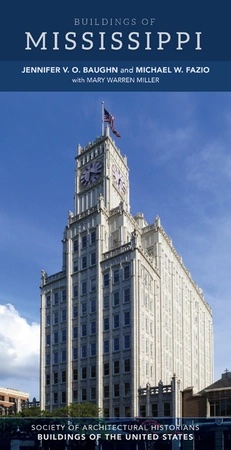
Built for a Presbyterian congregation, this Greek Revival building became Zion Chapel AME in 1868. The church has a pedimented portico on fluted columns and is little altered except for the replacement of its original twelve-over-twelve, double-hung sash with round-arched windows of leaded and stained glass. In 1870, pastor Hiram R. Revels became the first African American to serve in the U.S. Congress when he was appointed to the Senate by the Mississippi legislature.
Nearby at 603 Madison Street, Rose Hill Baptist Church (1908), the third building on this site, serves the oldest (organized in 1854) African American Baptist congregation in Mississippi. The Gothic Revival building has a gable-end facade and is dominated by a three-stage corner bell tower with a pyramidal spire.










